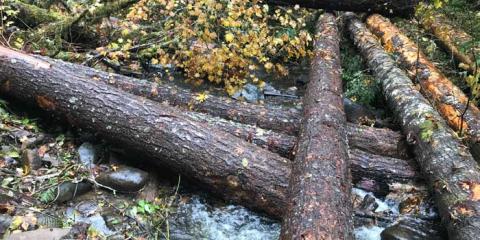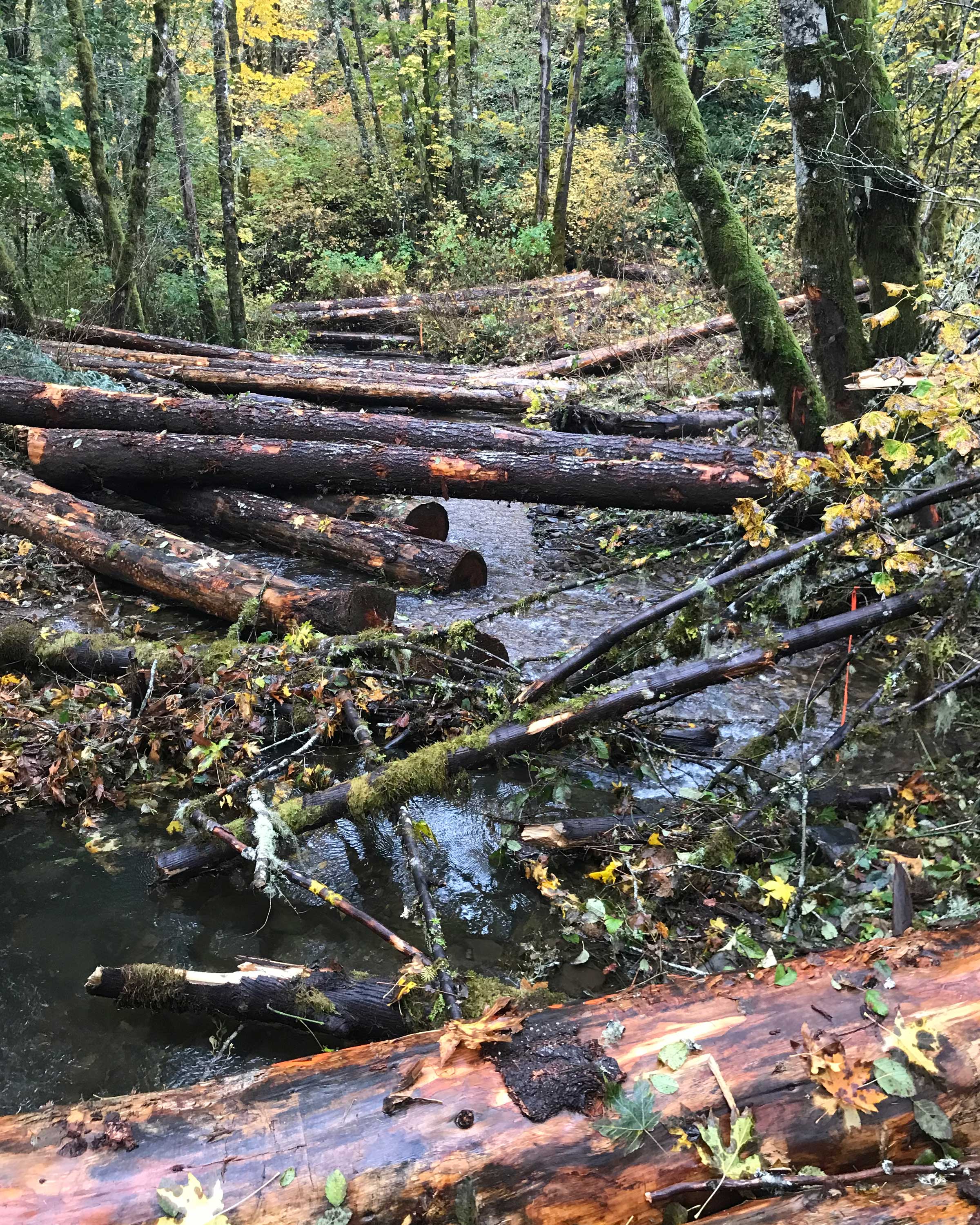Forester Friday: Jennifer Beathe
January 22, 2020
Forester Friday features an Oregon forester with an interesting or unique contribution to the forestry field. This series is meant to highlight and recognize these stories.
“Most foresters wanted to become professional foresters because they enjoy being outside and being physically active. In the practice of forestry, most foresters would agree that no two days are the same. I like the balance of working in solitude in the forest and working with my forestry colleagues,” says Jennifer Beathe, a forester with Starker Forests Inc.
Jennifer, who designs and supervises the construction of roads, bridges and other infrastructure necessary for logging on Starker Forests’ timberland, is this week’s Forester Friday profile.
She was recently involved in a watershed restoration project at South Fork Pedee Creek in southern Polk County. This ongoing restoration project includes placing log structures in the stream to restore the creek to a sustainable habitat for salmon and trout. The project also includes replacing two culverts that were too small and therefore blocking fish. Specifically, a lower culvert was replaced in September, and an upper culvert will be replaced later this year. All this work is ultimately helping create a better habitat for fish.

The project is a collaboration led by the Luckiamute Watershed Council, Starker Forests, Hancock Timber Resource Group, Forests Forever, the Bureau of Land Management (BLM) and a private landowner. The Oregon Watershed Enhancement Board awarded the Luckiamute Watershed Council a $121,684 grant to pay for what wasn’t covered by the partners.

Jennifer answered the following questions about the project via email.
Describe your experience working on the restoration project at South Fork Pedee Creek.
Having worked with the Luckiamute Watershed Council (LWC) on other projects, we knew they would be a good partner. They’re open to suggestions and ideas, and understood that the entire project would take several years to plan and implement. We share the same goal of making improvements to our watershed when the opportunity presents itself. Starker Forests likes to plan and pay for projects on our own lands, and in doing this, groups like the LWC can leverage our efforts for additional grant funding for their portion of the project. The South Fork Pedee Creek project included several landowners, including Hancock Forest Management and BLM.
How did you feel after the project was completed? Were you proud of the work that was done?
I’m always proud to complete a project that involves fish passage and habitat improvement. It’s human nature to feel good about doing things that help wildlife species. I’m pleased that the bridge Starker and Hancock installed will last for 50 years or more and will need minimal maintenance. I’m thankful for the expertise of the hydrologist with BLM, who directed the log placement portion of this project. He is knowledgeable and easy to work with. I’m also proud of our contractor, Mike Adams Construction, out of Stayton. When they do a construction project for us, they also take pride in the work they do. They will do whatever we ask so that we’re satisfied with the project. They also did the log placement work for the Pedee Project, and were excited to do that part of the project too. We’ve worked with them for nearly 20 years, and these long relationships establish trust and understanding so we can accomplish our goals with confidence.
What does this project and others like it do to improve and protect fish habitat?
While culverts are significantly less expensive than bridges, and an excellent option for stream crossings under roads, bridges can have a longer life span, have less maintenance issues over time, and do better at passing large wood downstream. The log placement portion of the project increases stream complexity, which is great for fish. Increasing stream complexity means that the large logs and wood in the stream divert water flow, which creates pools and provides cover for fish. When you combine that with our riparian buffers for shade and cold water flowing off managed forests, this is great habitat for fish species.
Why is it important to improve and protect these habitats?
Healthy populations of fish in our rivers and streams is important. The highest-quality water in Oregon comes from forests, including private managed forests. Private forests can and do provide abundant wildlife habitat in Oregon. In particular, private forests can provide habitat for deer and elk, pollinators and songbirds, which nest in our young forests.
What other projects has Starker worked on to improve fish habitat?
Since the mid-1990s Starker Forests has replaced nearly 100 stream crossings for fish passage as part of the Oregon Plan for Salmon and Watersheds. All this work is voluntary, and the majority of the work we’ve done on our lands we’ve paid for. We’re only involved in grant work when doing larger, cooperative projects with other organizations, like the Pedee Creek project.
Why does Starker take on these kinds of projects, and why are they important to the company?
We’ve been in business since 1936, and the Starker family has always believed that the responsibility of owning forestland also includes being a good steward to the land. Being a good steward to our forestlands includes providing habitat for the fish and wildlife species that call our forests home.
For more information about the South Fork Pedee Creek enhancement project, visit this website.
If you know an Oregon forester with an interesting or unique story we should share, email OFRI Social Media Intern Autumn Barber at barber@ofri.org.
